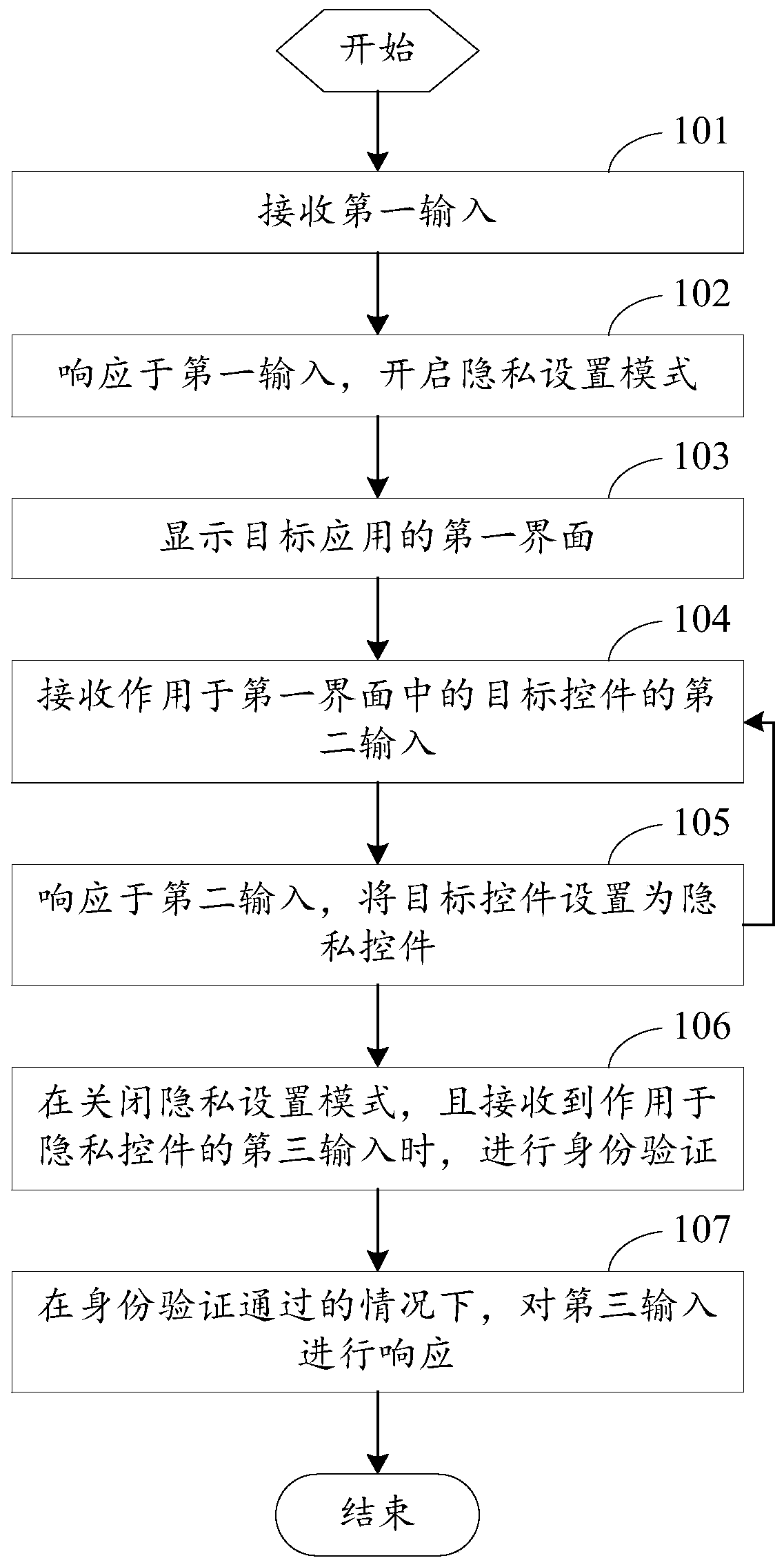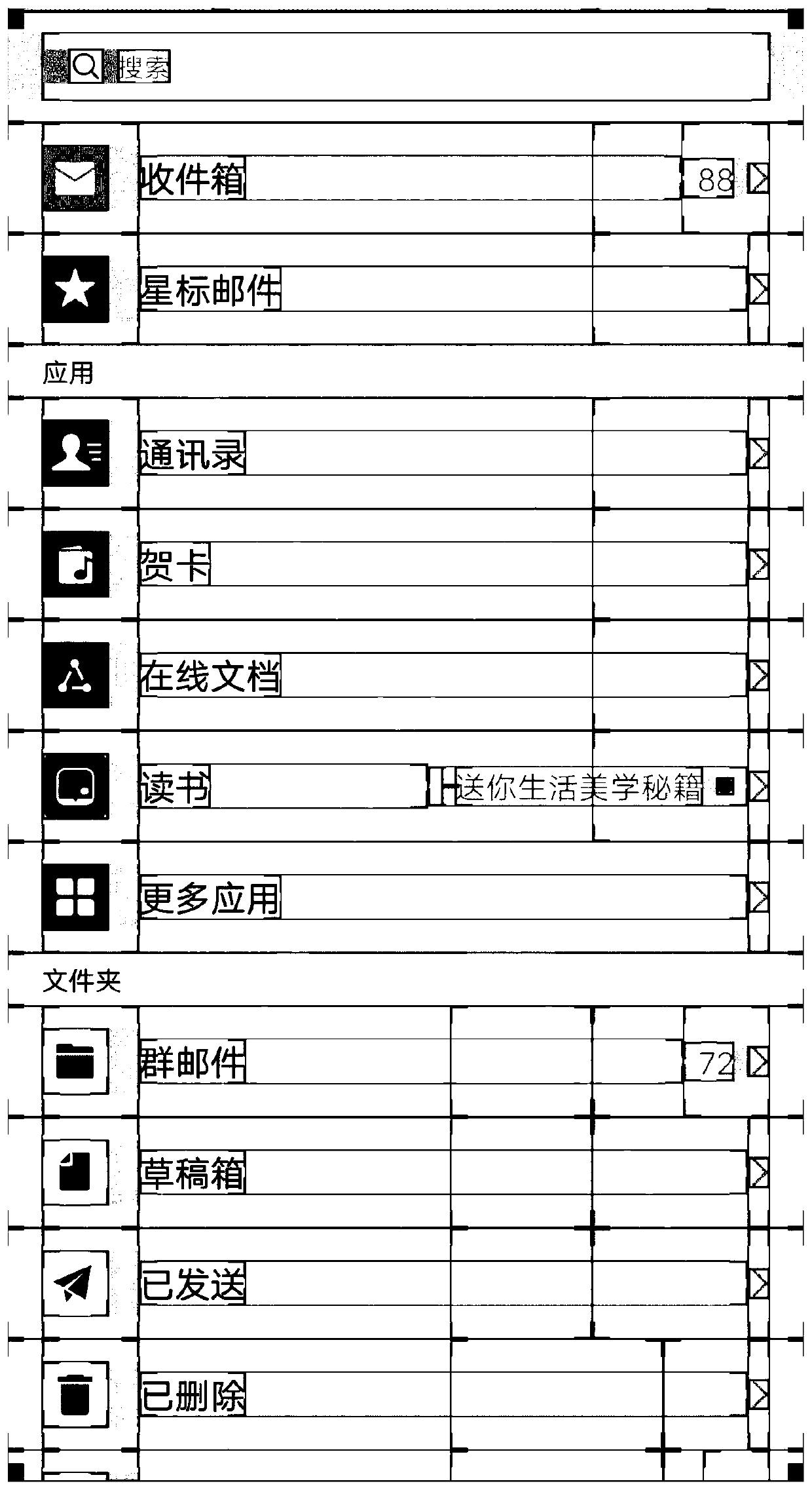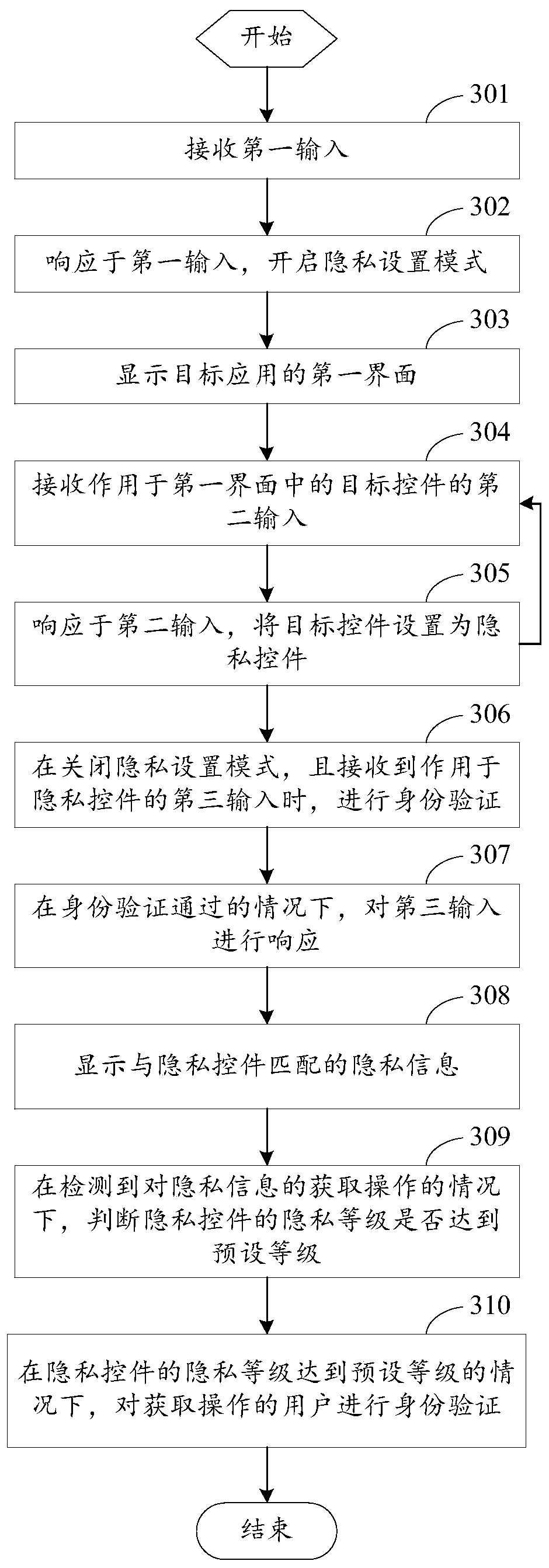Privacy protection method and electronic equipment
A technology for privacy protection and electronic equipment, applied in digital data protection, electronic digital data processing, instruments, etc., can solve the problem of insufficient refinement of privacy protection and achieve the effect of refinement of privacy protection
- Summary
- Abstract
- Description
- Claims
- Application Information
AI Technical Summary
Problems solved by technology
Method used
Image
Examples
Embodiment Construction
[0030] The following will clearly and completely describe the technical solutions in the embodiments of the present invention with reference to the accompanying drawings in the embodiments of the present invention. Obviously, the described embodiments are some of the embodiments of the present invention, but not all of them. Based on the embodiments of the present invention, all other embodiments obtained by persons of ordinary skill in the art without making creative efforts belong to the protection scope of the present invention.
[0031] In the embodiments of the present invention, words such as "exemplary" or "for example" are used as examples, illustrations or illustrations. Any embodiment or design solution described as "exemplary" or "for example" in the embodiments of the present invention shall not be construed as being more preferred or more advantageous than other embodiments or design solutions. Rather, the use of words such as "exemplary" or "such as" is intended ...
PUM
 Login to View More
Login to View More Abstract
Description
Claims
Application Information
 Login to View More
Login to View More - R&D
- Intellectual Property
- Life Sciences
- Materials
- Tech Scout
- Unparalleled Data Quality
- Higher Quality Content
- 60% Fewer Hallucinations
Browse by: Latest US Patents, China's latest patents, Technical Efficacy Thesaurus, Application Domain, Technology Topic, Popular Technical Reports.
© 2025 PatSnap. All rights reserved.Legal|Privacy policy|Modern Slavery Act Transparency Statement|Sitemap|About US| Contact US: help@patsnap.com



